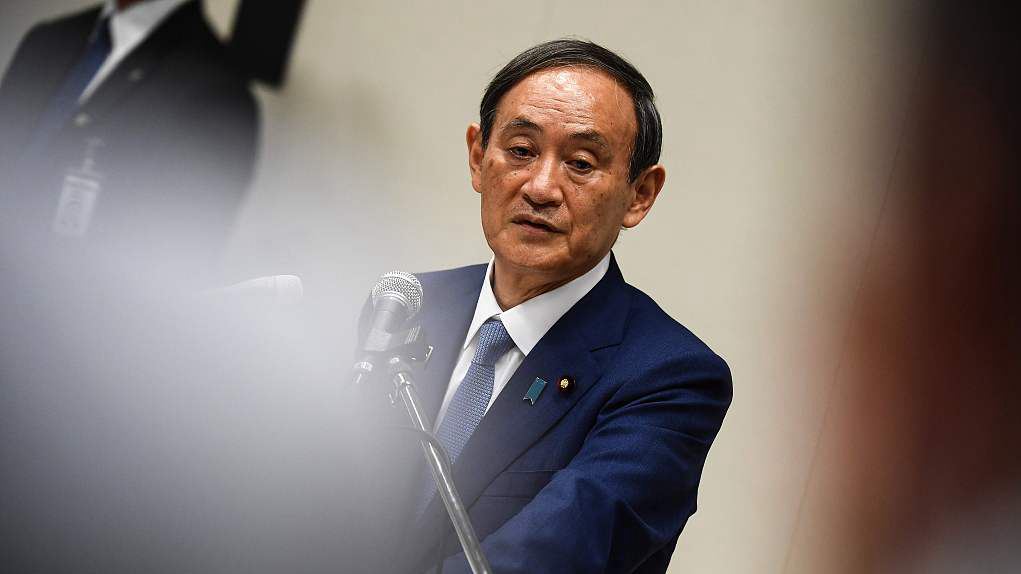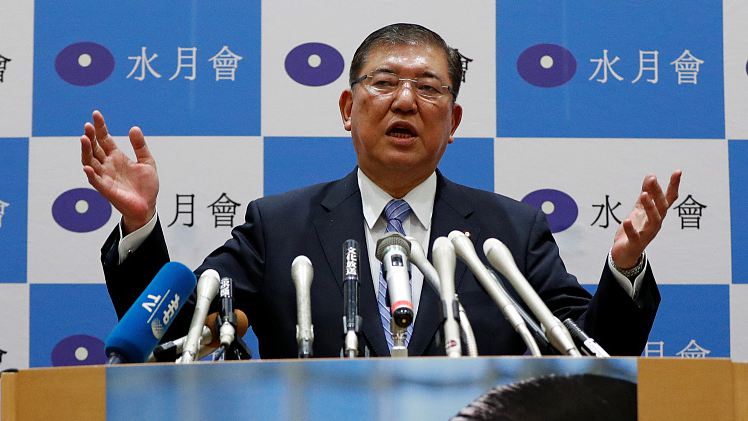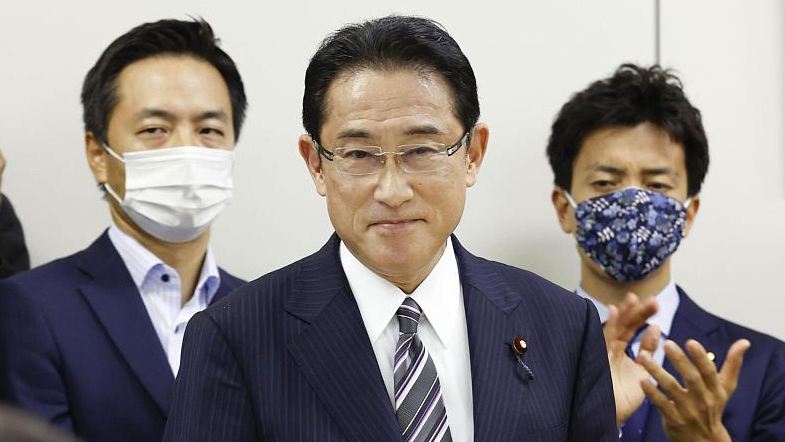Shinzo Abe is departing as Japan's prime minister due to poor health, with no successor in place and a country left facing a series of crises.
Ten days before the ruling Liberal Democratic Party (LDP) votes for its next president – who is almost guaranteed to be voted in as prime minister three days later – contenders are jockeying for position, both for a shot at the top job now and to position themselves for another contest in one year's time.

Shinzo Abe announces his resignation as Japan's prime minister due to health reasons, Tokyo, Japan, August 28, 2020. /VCG
Shinzo Abe announces his resignation as Japan's prime minister due to health reasons, Tokyo, Japan, August 28, 2020. /VCG
Who's in the frame, what challenges will they face and how will the winner be decided?
The process
The LDP votes for its new president on September 14, but a party-wide ballot will be delayed until next year. Instead, a combination of the party's Diet members and regional representatives will select a leader to see out the remainder of Abe's term, due to end in September 2021.
Each of the LDP's 394 parliamentary members will have one vote and each of the party's 47 prefectural chapters will have three. The winning candidate needs to secure at least 268 of the 535 votes for a majority.
Read more:
In The Spotlight: The departure of Shinzo Abe
Abe's shock resignation and his legacy
The identity of the electorate changes the dynamics of the contest. Outsiders who might fancy their chances among the ordinary party membership – whose votes would have an equal weight as parliamentarians in a full election – are less likely to have a shot with a limited pool of elderly, male insiders.
Despite an initial flurry of speculation, only three contenders have put their names forward.
The contenders
After Abe's first spell as prime minister ended in 2007, Japan had five short-term prime ministers in succession before he returned to power in 2012.
The overwhelming favorite to follow Abe's second stint, at least for one year, is Yoshihide Suga.
The chief cabinet secretary, government spokesman and Abe loyalist has gained the support of several LDP factions, and goes into the election as the continuity candidate. He would be expected to follow in his predecessor's policy footsteps, though his relative lack of foreign affairs experience has been highlighted.

Yoshihide Suga announces his candidacy for the Liberal Democratic Party presidency, Tokyo, Japan, September 2, 2020. /VCG
Yoshihide Suga announces his candidacy for the Liberal Democratic Party presidency, Tokyo, Japan, September 2, 2020. /VCG
Since entering the leadership contest on Wednesday, Suga's popularity has leapt: 38 percent of the public view the 71-year-old as the most suitable prime minister, an Asahi Shimbun survey published on Friday suggested, up from just three percent in June. He looks to be a compromise choice allowing the party's factions to keep their powder dry before the party-wide vote next year.
Previous polls indicated Shigeru Ishiba, the former defense minister who beat Abe in the first round of voting in 2012, was the public's preferred option, but Friday's survey put him in second place on 25 percent, down from 31.

Shigeru Ishiba announces his candidacy for the Liberal Democratic Party presidency, Tokyo, Japan, September 1, 2020. /VCG
Shigeru Ishiba announces his candidacy for the Liberal Democratic Party presidency, Tokyo, Japan, September 1, 2020. /VCG
The 63-year-old appears to have retained strong backing from party members, but has attracted little support from MPs. The decision not to open the election to the members likely ends his chances of taking the top job this year, but running will keep his profile high ahead of the 2021 contest.
LDP head of policy, Fumio Kishida, rumored to be favored by Abe, has struggled to gain support from the public or the party. He is the preferred option of just five percent of the public, the latest Asahi poll suggested, but is likely running to keep his name in the frame for next year.
The challenges
Whoever replaces Abe will face a myriad of challenges, and just one year to prove himself before the party-wide vote in September 2021.
The fight against COVID-19 continues, and the virus has shattered the Japanese economy.
The country has suffered relatively few deaths – 1,334 as of Friday – during the pandemic, but polls suggest the national government's handling of the crisis is far from popular. Meanwhile, the economy shrank by 7.8 percent in the second quarter and public debt stands at over 200 percent of GDP.
Restoring the economy will be the initial priority and may provide opportunities to address some structural issues too, though there's no quick fix to the longstanding issue of Japan's aging population. It'll be up to Abe's successor to determine whether an increasingly openness to foreign workers continues.

Fumio Kishida announces his candidacy for the Liberal Democratic Party presidency, Tokyo, Japan, September 1, 2020. /VCG
Fumio Kishida announces his candidacy for the Liberal Democratic Party presidency, Tokyo, Japan, September 1, 2020. /VCG
The pandemic also dashed Abe's hopes of departing the stage in the wake of the Tokyo 2020 Olympic Games. A new prime minister will now oversee the Games – penciled in for July-August 2021 – in a world that is likely to be in a period of post-pandemic uncertainty.
Another challenge is how to approach foreign policy in the aftermath of Abe, who worked hard to cultivate relationships with leaders around the world. He was one of few leaders to keep in U.S. President Donald Trump's good books.
There is also a doubt over the continuation of Abe's dream of revising the country's pacifist constitution: Polling suggests the controversial policy is unpopular with the public, and without the two-time prime minister's drive the ambition is less likely to be realized.
(Cover photo: Fumio Kishida (L), Yoshihide Suga (C) and Shigeru Ishiba (R), candidates for the Liberal Democratic Party presidency. /VCG compilation)